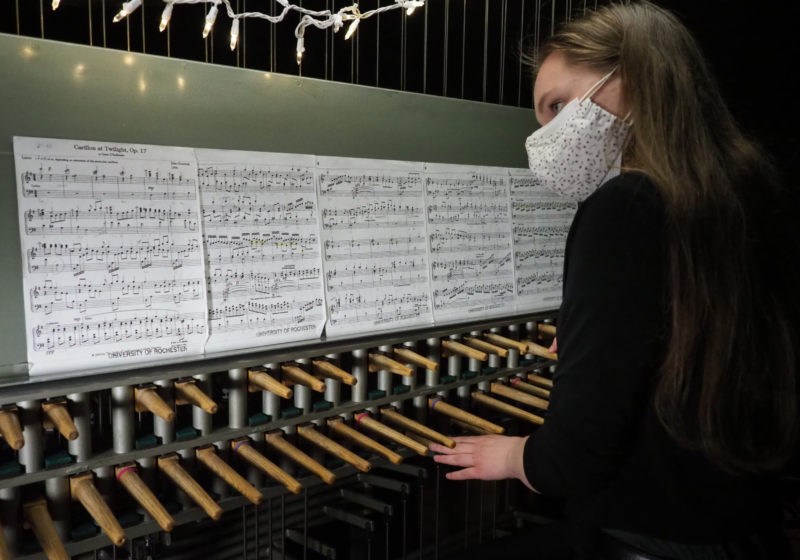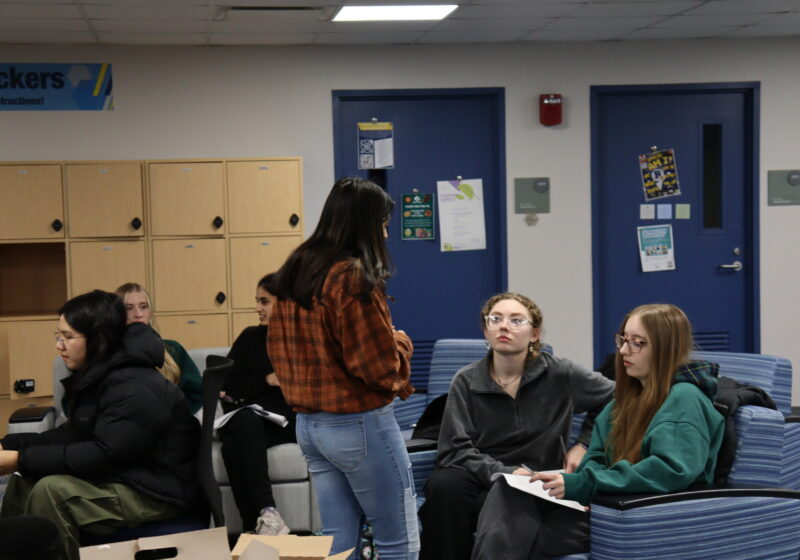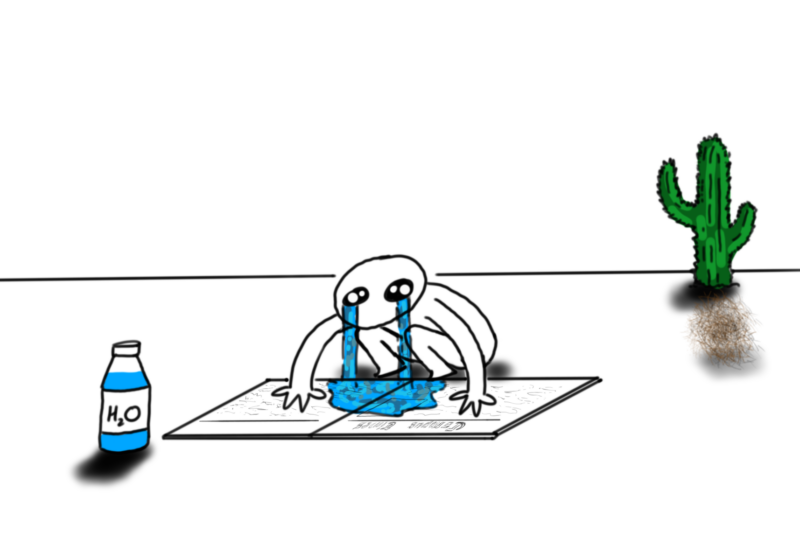It was an unnervingly long ride to the top of the bell tower in Rush Rhees Library. Then again, it was likely much more unnerving when the original elevator was still in place. Going up, I could feel the height as I ascended the tower, and there’s a sense of weight and significance as the doors open to the tower.
When I stepped out of the elevator, I was greeted by a relatively narrow hallway with metal cages on either side. The cages, rather than suffocating or confining, felt sheltering. The room outside was massive, a dark chasm with a few large metal struts criss-crossing the walls, and a column up the middle. A wooden box was suspended overhead, and if not for the emptiness all around, it might seem unassuming. As I climbed the stairs, the box disappeared from view, and I came to a walkway that connects the bellman’s room to the instrument.
The room was small but comfortable, with a wide window made up of small panes showing the entire city of Rochester. The night sky is punctuated by lights as far as the eye can see, like an audience for an instrument intended to be heard far and wide. Across from the windows sits the carillon itself. At first glance it looked similar to a stripped-down piano, with pegs and pedals arranged like keys, and cables that run up and down behind them. Watching it being played, however, showed just how different it is.
(Claire Janezic Performs “Lament & Alleluia”)
Without the microphones and speakers pumping the sound of the bells back into the cavernous space, the acoustics of the building would prevent the musician from hearing their own playing. For those in the room, the only sounds the instrument makes are the heavy clacking and mechanical whirring of pulleys and wooden pieces sliding against each other as each peg and pedal is pressed down. The bench seemed to sit slightly higher than it should, and musicians must balance with their core muscles while playing using all four limbs. Some of the bells can be struck with little effort, but for the larger bells of the lower notes, a harder press is required.
Because any additional weight in the box can affect the tuning of the instrument, only the player is allowed in. Aman and any other students present must stand in the hallway and listen, and discuss any feedback from the walkway between the carillon and the bellman’s room. Despite being alone in the room, playing the instrument doesn’t feel solitary. “Piano is a more individual experience,” sophomore Kayla Gunderson said. “[Carillon] is more collaborative. Last year before COVID […] A group of three students and Doris would go up and play together and learn from each other.”
Aman also highlights the learning nature of the Hopeman Carillon in particular. When the instrument was first brought here, only professors played it. Eventually, first male and then female students were allowed to play. “The first students were simply presented with the carillon and told to play, and that’s still how we do it,” she explained. “These are students learning to play the instrument, and across the semester you can hear us getting better.”
Aman sees the carillon as a fundamentally communal instrument. “In my mind, the carillon is the voice of the University,” she said. “We sing how we feel, and so we try to play familiar songs from many cultures. Songs that people will recognize and that will make them feel at home.”
This past week the bells rang in memory of alumni who died from COVID-19. As Aman talked about the ceremony, and told me the communal function of the instrument, I was reminded of a poem by John Donne, called “No man is an Island.” In it, he talks about how every individual is part of something bigger.
No man is an island,
Entire of itself.
Each is a piece of the continent,
A part of the main.
If a clod be washed away by the sea,
Europe is the less.
As well as if a promontory were.
As well as if a manor of thine own
Or of thine friend’s were.
Each man’s death diminishes me,
For I am involved in mankind.
Therefore, send not to know
For whom the bell tolls,
It tolls for thee.






